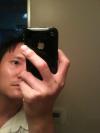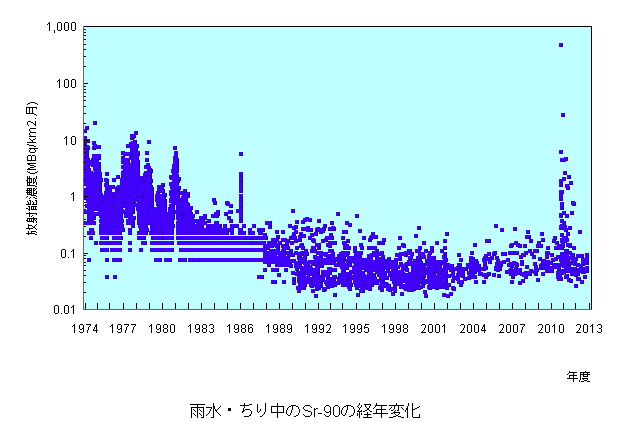| Online: | |
| Visits: | |
| Stories: |

| Story Views | |
| Now: | |
| Last Hour: | |
| Last 24 Hours: | |
| Total: | |
JP Gov’s data shows Sr-90 and Cs-137 density in rain and dust went over 1000 % of Chernobyl accident time after 311
Strontium-90 and Cesium-137 density in rain and dust increased over 1,000% of when Chernobyl accident took place, according to nuclear regulatory agency.
This is based on their data base but back data of each year is not attached.
The graphs below are titled as “Change of Sr-90 and Cs-137 density in Japanese rain and dust over the years (1974-2012)”. The specific location is not mentioned.
Their report says the monthly fallout of Sr-90 and Cs-137 had been decreasing since they banned atmospheric nuclear test in 1981.
However it increased in 1986 due to Chernobyl accident. It went back to the decreasing trend since then, but they observed the increase after 311 again.
Their data reads the highest density of Sr-90 was approx. 10 MBq/km2・month in 1986. However it jumped up to nearly 1,000 MBq/km2・month in 2011.
Also regarding Cs-137 density, it reached approx. 500 MBq/km2・month in 1986 but it went over 10,000 MBq/km2・month in 2011.
↓ Sr-90
↓ Cs-137
http://www.kankyo-hoshano.go.jp/01/0101flash/01010211.html
http://www.kankyo-hoshano.go.jp/01/0101flash/01010221.html
http://www.kankyo-hoshano.go.jp/kl_db/servlet/com_s_index
Iori MochizukiThe post JP Gov’s data shows Sr-90 and Cs-137 density in rain and dust went over 1000 % of Chernobyl accident time after 311 appeared first on Fukushima Diary.
Source: http://fukushima-diary.com/2015/04/jp-govs-data-shows-sr-90-and-cs-137-density-in-rain-and-dust-went-over-1000-of-chernobyl-accident-time-after-311/





